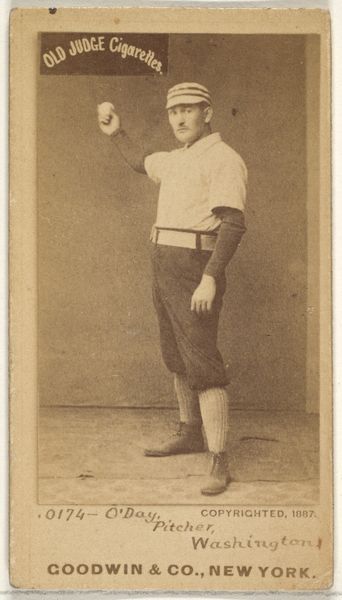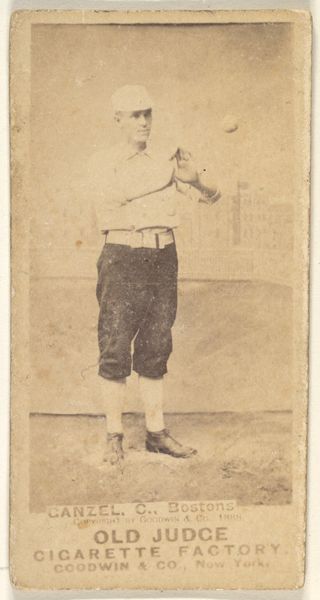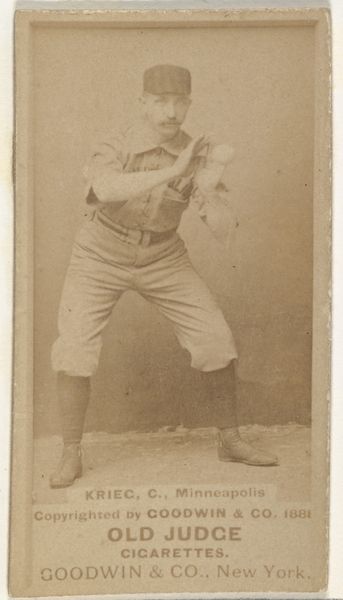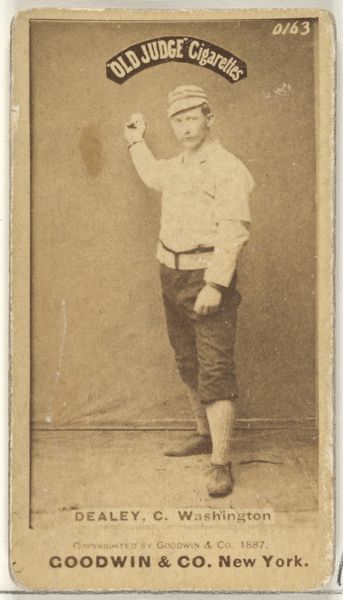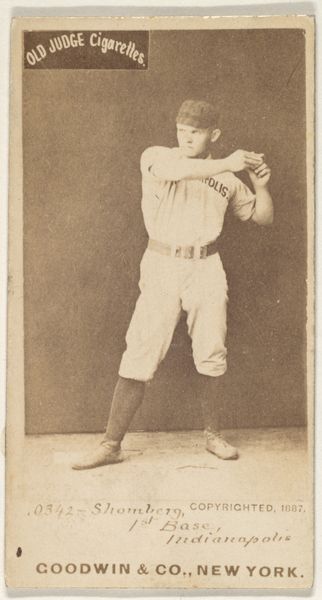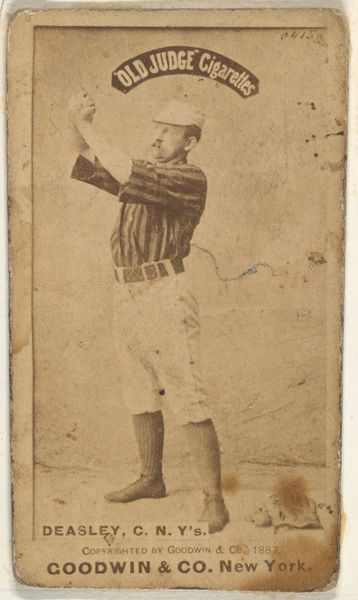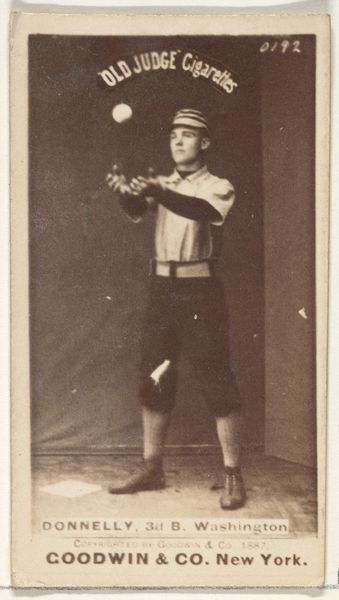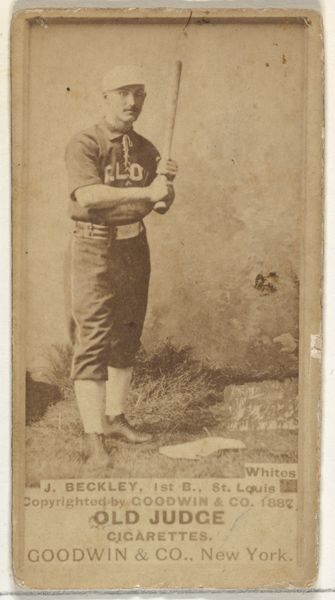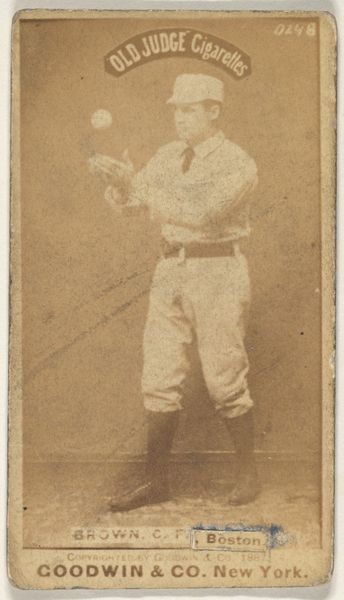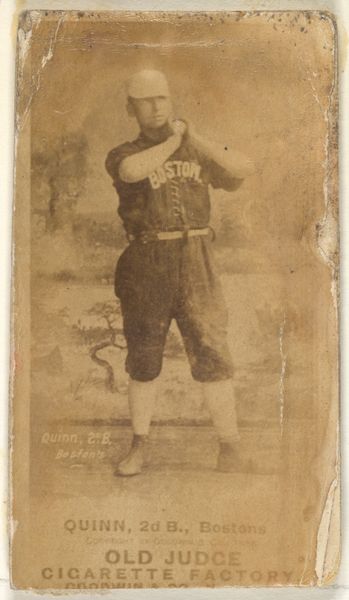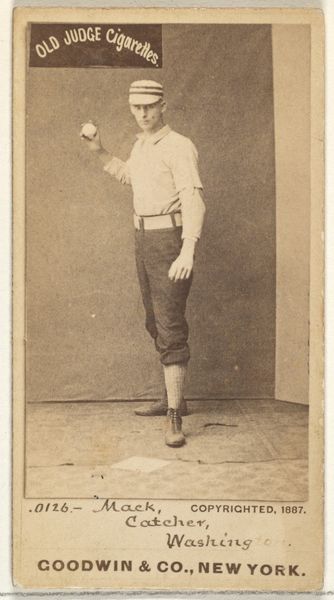
James B. "Jim" Donnelly, 3rd Base, Washington Nationals, from the Old Judge series (N172) for Old Judge Cigarettes 1887
0:00
0:00
print, photography, collotype, albumen-print
#
portrait
# print
#
photography
#
collotype
#
coloured pencil
#
men
#
albumen-print
#
realism
Dimensions: sheet: 2 11/16 x 1 3/8 in. (6.9 x 3.5 cm)
Copyright: Public Domain
Curator: Let's turn our attention to this captivating piece: an albumen print dating back to 1887, titled "James B. 'Jim' Donnelly, 3rd Base, Washington Nationals, from the Old Judge series (N172) for Old Judge Cigarettes." Editor: My first thought is how stiff and staged it feels. The monochrome palette and rigid pose make it look more like a document than a celebration of athletic prowess. Curator: Precisely! And therein lies its genius. This isn't merely a portrait, but a meticulously constructed image trading card from the Old Judge Cigarettes series. It represents the convergence of sport, commerce, and photography at a pivotal moment. Consider the layering: an albumen print, perhaps touched with collotype to create multiples. Editor: The materiality of it intrigues me. Imagine the production line. Factory workers churning out these cards as advertising ephemera for a young and popular baseball enterprise. Think about the texture of the card stock, its fragility, and how its value has shifted over time. Curator: I see the symmetry, Donnelly centered, the baseball hovering just so, creating a triangular tension. He acts as the figure, yes, but notice how the advertising logo, set against a blank backdrop, frames the whole composition as well, asserting the capitalist motive. Editor: Yes, and even his clothing—the wool uniform, the striped cap. Those are materials directly connected to work, sweat, and the emerging commercialization of sport in America. The very smell of the card would likely be linked to the pungent aroma of tobacco in a store. Curator: The tonal gradations, however subtle, bring forth Donnelly as an archetypal representation, not an individual. It's an artful distillation of early baseball into a collectible format, using the constraints of the photographic medium to its full semiotic extent. Editor: What you perceive is more than its original form, more so in the historical implications embedded in the photograph itself. The labor conditions, material sources, consumer culture, and how these intersecting vectors of value changed sports forever are all so evident. Curator: This artwork offers a fascinating opportunity to examine the intersections of image, ideology, and popular culture through its very structural organization. Editor: For me, this artifact gives clues to the tactile nature of the commercial world in the late 19th century, telling us as much about labor and the manufacturing processes.
Comments
No comments
Be the first to comment and join the conversation on the ultimate creative platform.
